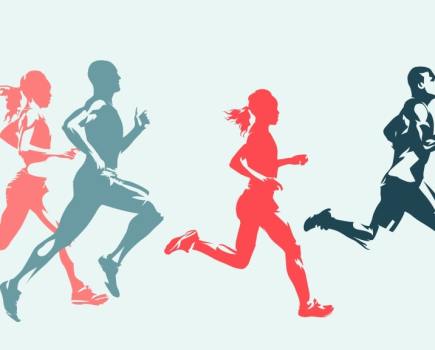Men’s Fitness meets the fast Finn vying to become F1 Champion.
Since joining the Mercedes team in 2017, Valtteri Bottas has secured eight Grand Prix wins and 39 podium finishes (he’s got 50 in total).
The 30-year-old Finn also played a key role in the team’s success in the Constructors’ Championship over the past three seasons, and finished runner-up to teammate Lewis Hamilton in the Drivers’ Championship in 2019.
“Ever since I fell in love with F1 as a kid it’s been my dream to one day become world champion,” he tells MF.
“I’m in the fight for the title this year and staying with Mercedes [Bottas signed a contract extension for another year in August 2020] puts me in the best possible position to compete for it next season as well.”
Training Regime
“I love to train,” says Bottas. “For me it’s a lifestyle. I could never just sit and do nothing. I train in many ways, but the main focus is to develop.
“I run and cycle a lot which is a basic cardio exercise. In the gym we usually focus on more sport-specific training.”
That sport-specific training has an emphasis on building lean upper-body muscle and core strength, with special focus on the muscles supporting the head and neck – to withstand the G-forces F1 cars generate.
“I often train wearing a race helmet and doing drills that work the neck muscles,” says Bottas, whose workout armoury also includes agility drills and reaction training – using the floor-to-ceiling speedball favoured by boxers – to improve reflexes and stamina.
“In order to maximise the effectiveness of my workouts,” he continues, “I need to analyse my workout results. My parents gave me a Polar watch over ten years ago as a gift to help me improve my training and performance, and I’ve never looked back.
“Before the season starts, I try to push my training further by hiking and cycling my way through Finnish and French terrain.”
But when lockdown threw a spanner into the works Bottas seized the opportunity to up his fitness levels.
“Normally we just have the winter break to work on fitness in a condensed time,” he says.
“I use it for endurance training, working out in the wilderness doing cross-country skiing. But the extended break gave me more time to focus on improving physically and mentally.”
Nutrition
Having the muscle strength and physical stamina to drive at F1 speeds – and survive the impact of a high-octane collision – has to be balanced against a driver’s weight requirements and a need to stay trim.
In a sport of such fine margins, every ounce needs to be accounted for.
“Diet plays a big part in the driver’s performance programme,” says Bottas. “I no longer find a carefully thought-out diet challenging to follow, because it’s just what I’m used to now.”
Although he concedes that by sticking rigidly to the plan, most of the time, he can afford a few cheat days. “It just means I can also enjoy good food and drink – for an indulgence I like chocolate and I don’t mind a cold beer from time to time.”
Mindset
Bottas has been praised by peers and the press alike for his mental grit and determination on the track, as well as his management of the team dynamic. Some drivers may suffer – subconsciously at least – from being number-two to a champion of Lewis Hamilton’s pedigree.
But the Finn continues to take the challenge to his teammate in qualifying and racing – ploughing his own furrow and gaining points and plaudits in the process.
“I think one of the most important psychological aspects to F1 is a mental reboot,” he explains.
“By that I mean whoever can recover mentally the fastest is also very fast on the track and mentally in good condition; my ethos is to analyse, evolve and recover.”
He also insists that his devotion to physical training, cycling and skiing is a mental health boost: “When you know you are physically at your best shape, the mind will follow.”
Valtteri Bottas has partnered up with polar.com as their Official Global Athlete.








